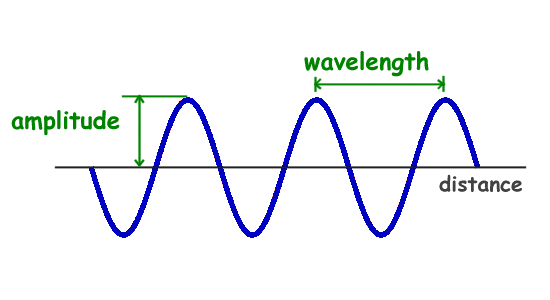

And in the case of a stadium wave, the particles or interacting parts of the medium are the fans in the stadium.Ĭonsider the presence of a wave in a slinky. In the case of a sound wave in air, the particles or interacting parts of the medium are the individual molecules of air. In the case of the slinky wave, the particles or interacting parts of the medium are the individual coils of the slinky. The interactions of one particle of the medium with the next adjacent particle allow the disturbance to travel through the medium.

In other words, the medium is composed of parts that are capable of interacting with each other. To fully understand the nature of a wave, it is important to consider the medium as a collection of interacting particles. And in the case of the stadium wave, the medium through which the stadium wave travels is the fans that are in the stadium. In the case of a sound wave moving from the church choir to the pews, the medium through which the sound wave travels is the air in the room. In the case of a water wave in the ocean, the medium through which the wave travels is the ocean water. In the case of our slinky wave, the medium through that the wave travels is the slinky coils.

The wave medium is not the wave and it doesn't make the wave it merely carries or transports the wave from its source to other locations. In a similar manner, a wave medium is the substance that carries a wave (or disturbance) from one location to another. The news media is merely the thing that carries the news from its source to various locations. The media doesn't make the news and the media isn't the same as the news. The news media refers to the various institutions (newspaper offices, television stations, radio stations, etc.) within our society that carry the news from one location to another. You have perhaps heard of the phrase news media. The repeating and periodic disturbance that moves through a medium from one location to another is referred to as a wave.īut what is meant by the word medium? A medium is a substance or material that carries the wave. However, if the first coil of the slinky is continuously and periodically vibrated in a back-and-forth manner, we would observe a repeating disturbance moving within the slinky that endures over some prolonged period of time. A pulse is a single disturbance moving through a medium from one location to another location. If the first coil of the slinky is given a single back-and-forth vibration, then we call the observed motion of the disturbance through the slinky a slinky pulse.

We can then observe this disturbance moving through the slinky from one end to the other. The act of moving the first coil of the slinky in a given direction and then returning it to its equilibrium position creates a disturbance in the slinky. The particle might be moved upwards or downwards, forwards or backwards but once moved, it is returned to its original equilibrium or rest position. To introduce a wave into the slinky, the first particle is displaced or moved from its equilibrium or rest position. The coils of the slinky naturally assume this position, spaced equally far apart. When the slinky is stretched from end to end and is held at rest, it assumes a natural position known as the equilibrium or rest position. Consider a slinky wave as an example of a wave. But what makes a wave a wave? What characteristics, properties, or behaviors are shared by the phenomena that we typically characterize as being a wave? How can waves be described in a manner that allows us to understand their basic nature and qualities?Ī wave can be described as a disturbance that travels through a medium from one location to another location.


 0 kommentar(er)
0 kommentar(er)
